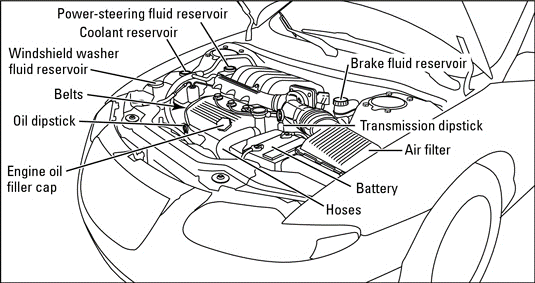Coolant and antifreeze are two terms often used interchangeably to describe the liquid that helps keep your car’s engine running smoothly. While they are related, there are some key differences between the two. In this blog post, we’ll explore the differences between coolant and antifreeze and why they matter.
Coolant
Coolant is a mixture of water and various chemicals that help regulate the temperature of your car’s engine. It works by absorbing heat from the engine and transferring it to the radiator, where it’s dissipated into the air. In addition to regulating engine temperature, coolant also helps prevent corrosion and lubricates the engine’s water pump.
The chemicals in coolant vary depending on the manufacturer, but most include a mix of ethylene glycol, propylene glycol, and other additives. These additives can include anti-corrosion agents, anti-foaming agents, and pH stabilizers.
Antifreeze
Antifreeze is a type of coolant that is designed specifically to prevent the liquid in your car’s engine from freezing in cold temperatures. It works by lowering the freezing point of the liquid, so it can withstand colder temperatures without freezing and causing damage to the engine. Antifreeze is also designed to raise the boiling point of the liquid, so it can withstand higher temperatures without boiling and evaporating.
The most common type of antifreeze is made from ethylene glycol, which is a toxic chemical that can be harmful to humans and animals if ingested. For this reason, it’s important to handle antifreeze carefully and dispose of it properly.
Differences Between Coolant and Antifreeze
While coolant and antifreeze are related, there are some key differences between the two:
- Purpose: Coolant is designed to regulate engine temperature, while antifreeze is designed to prevent the liquid in your engine from freezing.
- Composition: Coolant contains a mix of chemicals that help regulate engine temperature, prevent corrosion, and lubricate the water pump. Antifreeze contains chemicals that lower the freezing point and raise the boiling point of the liquid.
- Toxicity: Some types of antifreeze, such as those made from ethylene glycol, can be toxic to humans and animals if ingested. Coolant, on the other hand, is generally not considered toxic.
Why the Differences Matter
Understanding the differences between coolant and antifreeze is important for several reasons:
- Proper maintenance: Using the right type of coolant and antifreeze for your car is essential to keeping your engine running smoothly and preventing damage.
- Safety: Handling antifreeze carefully and disposing of it properly is important to prevent harm to humans and animals.
- Environmental impact: Improper disposal of antifreeze can harm the environment, so it’s important to dispose of it properly.
While coolant and antifreeze are related, they serve different purposes and have different compositions. Understanding the differences between the two is important for proper car maintenance, safety, and environmental impact.
Learn more maintenance tips as well as safe driving strategies and techniques with a driver safety course. Join 500,000 drivers who have selected a DriveSafe Online defensive driving course. Select I’M READY to lock in your low price now. You can begin the course whenever your schedule allows.

Patrick M. is Editorial Director for the always expanding DriveSafe Online library of courses. With over two decades of experience developing award-winning training, he now focuses on innovating online driver safety training. Pulling from his background in journalism, he steers the wheel behind the creation of top-tier content that promotes a better journey—whether on the digital highway of learning or the real roads we travel every day.
